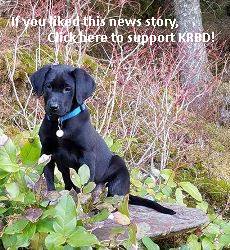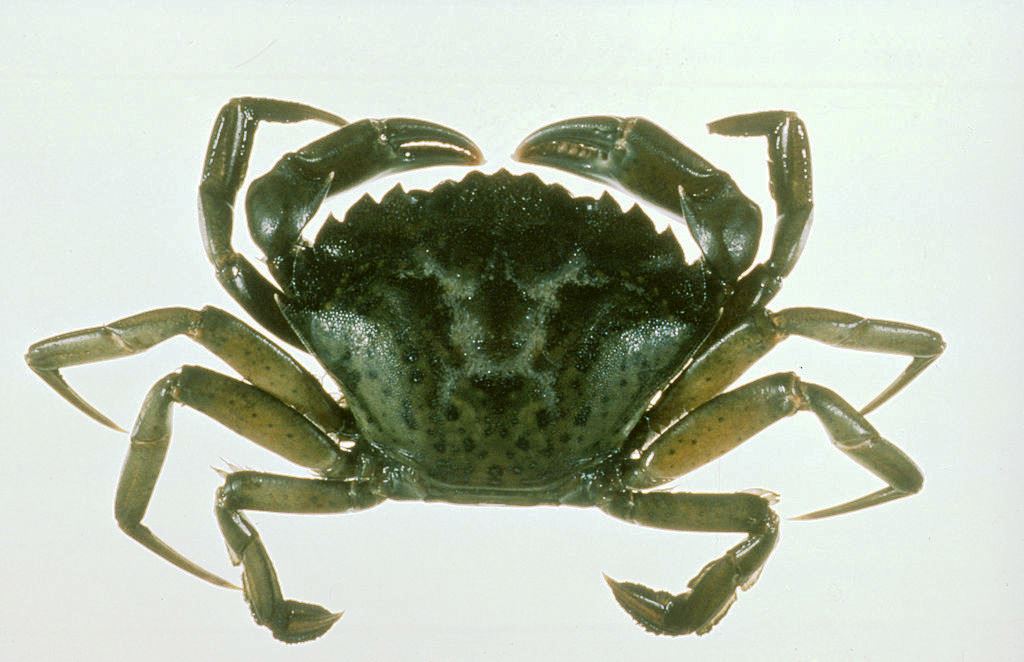Alaska is known for its seafood, and crab is high on the list of popular delicacies from the 49th state. We’ve got several different kinds of king crabs, along with snow, Tanner and Dungeness.
There is one species of crab that is on the way to Alaska, or may be here already, but it’s not one that anyone wants to see.
The European Green Crab is an invasive species that has been working its way up the West Coast for a while now.
Gary Freitag is the Ketchikan coordinator for the UAF Marine Advisory Program. He said the green crab started out in San Francisco Bay in the late 1980s.
“And it’s been progressing north a couple hundred miles every couple years, and it’s finally gotten a couple years ago, got to within I think about 90 miles of our border here in Alaska,” he said. “The larvae are a plankton, so they get carried by the current and then they settle down to the bottom and grow up and then spawn, and then another set of larvae move farther north and it’s just continually migrating up. So, we think we have some in this region now.”
If green crabs do succeed in their trek northward, it could mean trouble for indigenous species.
“They have a tendency to eat small crabs like baby Dungeness, and other shellfish and those kinds of things. So, it’s really been devastating in places south, especially in Vancouver Island and some of the Washington (state) bays, as well,” he said.
So what can be done about it?
Freitag said first, they need to know where the invasive crabs are and to that end, he’s working with the Southern Southeast Regional Aquaculture Association to set traps near some of SSRAA’s hatchery sites south of Ketchikan, and close to the Canadian border.
“I asked them if they would be willing, when they’re not feeding fish for these remote releases of salmon, if they would go ahead and do some experimental trapping for us,” he said. “I was able to get the permits from Alaska Department of Fish and Game all squared away. So, these remote camps will be doing some trapping for me.”
Freitag said if those traps yield invasive green crabs, he’s ready to take quick action, “and prevent that jumping –continually spawning and jumping farther north, so that we can prevent it from really invading all of Southeast Alaska and causing problems. At least, we would like to think we’d be able to do that.”
Doing that would require heavy trapping of any bay where green crabs are found. Any indigenous crabs caught would be released back into the bay, and trapped green crabs would be disposed of as they’re caught.
Which sounds like a lot of work. And will it work?
“We don’t know how effective it’s going to be,” Freitag said. “It’d just be luck if we end up getting the right bay where they would initially populate, but we figured we’d try a couple of them. In BC, they invaded all the bays separately, so if they were able to identify early on, they would probably have stopped some of it.”
In fact, he said, the technique was successful in some of the BC bays where green crabs were found, so their advancement was slowed down, at least.
The Sea Grant program that funds research projects like this one has been targeted for budget cuts from the federal government. But, Freitag said Alaska’s Congressional Delegation has always supported the Marine Advisory Program’s work, which includes marine safety training.
“They’re really supportive of this and hoping to put it back in the budget when it gets written by the Congress rather than the current administration,” he said. “So, we’re pretty optimistic.”
In the meantime, Freitag will continue monitoring invasive species, and sharing information with the public about Alaska’s marine environment.
Green crabs are not always green, according to the Alaska Department of Fish and Game, and they can look a lot like a juvenile Dungeness. You know you’ve got a green crab if it has five larger spines on both front sides of the shell; a Dungie has multiple, smaller spines in that same area. Here is a link with how to identify a green crab:
http://www.adfg.alaska.gov/index.cfm?adfg=invasiveprofiles.europeangreencrab_characteristics






